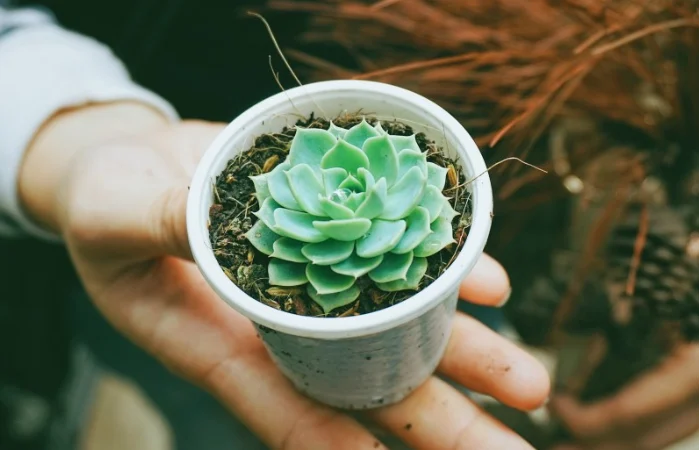Succulents are fascinating plants that have become increasingly popular in recent years. Their unique shapes, colors, and low maintenance requirements make them a great choice for both novice and experienced gardeners. In this article, we will discuss how to cultivate succulents successfully.
Choosing the Right Succulents
Light requirements: Some succulents thrive in full sun, while others prefer partial shade. Consider the amount of natural light available in your home or garden when selecting succulents.
Size: Succulents come in a wide range of sizes, from tiny miniatures to large specimens. Choose succulents that will fit well in the space you have available.
Hardiness: Some succulents are more cold-hardy than others. If you live in a region with harsh winters, choose succulents that can tolerate freezing temperatures.
Selecting the Right Container
Drainage: Succulents need well-draining soil to prevent root rot. Choose a container with drainage holes to allow excess water to escape.
Size: The container should be large enough to accommodate the roots of the succulent, but not so large that it holds too much moisture.
Material: Succulents can be grown in a variety of containers, including ceramic pots, plastic pots, and even recycled containers. Choose a material that suits your aesthetic preferences and provides good drainage.
Preparing the Soil
Well-draining mix: Succulents require a soil mix that drains quickly. You can purchase a pre-made succulent soil mix or make your own by combining equal parts potting soil, perlite, and sand.
pH level: Succulents prefer a slightly acidic to neutral soil pH. Test the pH of your soil and adjust if necessary.
Sterilization: To prevent the growth of harmful bacteria and fungi, sterilize your soil before planting. You can do this by baking it in the oven at a low temperature or using a commercial soil sterilizer.
Planting Succulents
Remove the succulent from its original container: Gently remove the succulent from its pot, being careful not to damage the roots.
Prepare the container: Fill the container with the prepared soil mix, leaving a small space at the top.
Plant the succulent: Place the succulent in the center of the container and fill in the gaps with soil. Gently press down on the soil to secure the succulent in place.
Water sparingly: After planting, water the succulent sparingly. Allow the soil to dry out completely between waterings.
Caring for Succulents
Succulents Light: need plenty of sunlight to thrive. Place your succulents in a location that receives at least six hours of direct sunlight per day. If you are growing succulents indoors, use a grow light to provide additional light.
Watering: Succulents are drought-tolerant plants and do not need frequent watering. Water your succulents only when the soil is completely dry. When watering, soak the soil thoroughly and allow any excess water to drain away.
Fertilizing: Succulents do not require a lot of fertilizer. You can fertilize your succulents once or twice a year with a balanced, water-soluble fertilizer.
Pruning: Prune your succulents regularly to remove dead or damaged leaves and stems. This will help keep your plants healthy and looking their best.
Repotting: Succulents may need to be repotted every one to two years as they grow. When repotting, choose a container that is slightly larger than the previous one and use fresh soil mix.
Propagating Succulents
Leaf cuttings: Succulents can be propagated from leaf cuttings. Simply remove a healthy leaf from the parent plant and place it on top of a bed of well-draining soil. Mist the soil regularly to keep it moist. After a few weeks, roots will begin to grow from the base of the leaf, and a new plant will form.
Stem cuttings: Some succulents can also be propagated from stem cuttings. Cut a healthy stem from the parent plant and allow it to dry for a few days. Then, plant the stem in a bed of well-draining soil and water sparingly.
Offsets: Many succulents produce offsets, or baby plants, that can be separated from the parent plant and planted on their own. Wait until the offsets are large enough to handle before separating them from the parent plant.
conclusion
cultivating succulents can be a rewarding and enjoyable experience. By choosing the right succulents, containers, and soil, and providing proper care and maintenance, you can enjoy these beautiful plants for years to come. Whether you are a beginner or an experienced gardener, succulents are a great choice for adding a touch of greenery to your home or garden.
Related topic:


